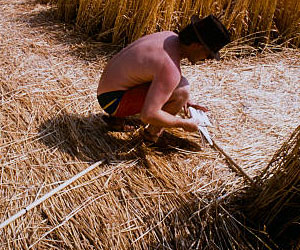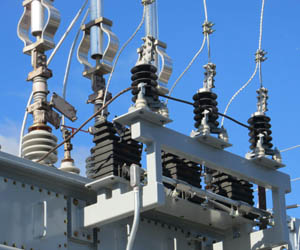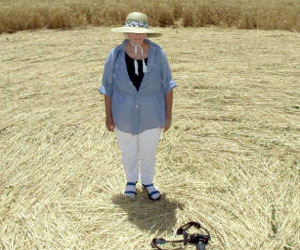


Dreams have always intrigued and mystified us, serving as a bridge between the conscious and subconscious mind. Within this enigmatic realm, dream awareness emerges as a profound state of consciousness where individuals become cognizant of their dreams. Understanding dream awareness opens the door to exploring the depths of our inner thoughts, fears, desires, and creativity.
Dream Awareness Defined: Dream awareness refers to the ability to recognize that one is currently dreaming while within a dream. It is the realization that the experiences, sights, and sensations are not bound by the rules of reality but are products of the subconscious mind.
Lucid Dreaming: Lucid dreaming is the pinnacle of dream awareness. In a lucid dream, individuals not only know they are dreaming but can also actively participate in and influence the dream's course. This state of awareness empowers dreamers to shape their dream experiences as they wish.
Training The Mind: Achieving dream awareness, particularly in the form of lucid dreams, often requires practice and training. Techniques such as reality checks, dream journaling, and intention setting can help individuals become more aware within their dreams.
Embracing Emotional Intensity: Dream awareness often heightens the emotional intensity of dream experiences. Dreamers can feel an array of emotions, from euphoria to terror, and explore the depths of their psyche. This emotional richness allows for self-reflection and insight.
Scientific And Psychological Perspective: From a scientific and psychological standpoint, dream awareness challenges our understanding of consciousness. It showcases that aspects of self-awareness can persist even in states of altered consciousness, like dreaming.
Nightmares And Dream Awareness: In the case of nightmares, dream awareness can be a double-edged sword. While it may lead to the recognition that one is dreaming, it can also intensify the fear and anxiety experienced within the dream. However, this heightened awareness can ultimately help individuals confront and process their fears.
Practical Applications: Dream awareness, especially in the form of lucid dreaming, has practical applications. It can be used to overcome phobias, rehearse important events, and explore creative ideas. Some even use it as a form of entertainment, creating their own vivid adventures.
Spiritual And Metaphysical Interpretations: Various spiritual and metaphysical traditions consider dream awareness as a connection to higher states of consciousness. Some believe that dreams provide insights into the soul, offering guidance, wisdom, and glimpses into the universal collective unconscious.
Self-Exploration And Personal Growth: Dream awareness serves as a valuable tool for self-exploration and personal growth. By analyzing dream narratives, symbols, and emotions, individuals can gain deeper insights into their subconscious, unresolved conflicts, and even receive solutions to waking-life challenges.
Dream awareness is a remarkable facet of human experience, where the boundaries between reality and the dream world become blurred. Whether through lucid dreaming or heightened recognition of emotional experiences within dreams, it offers a unique and profound opportunity for individuals to delve into their inner selves and discover the limitless potential of their minds. With practice, patience, and exploration, dream awareness can become a gateway to profound self-discovery and a deeper understanding of the intricacies of the human psyche.
Unraveling The Mysteries With Critical Inquiry
 Elaborate Hoaxes And Pranks
Elaborate Hoaxes And Pranks
One of the most prevalent forms of skepticism surrounding crop circles centers on the idea that the majority of these formations are elaborate hoaxes and pranks carried out by individuals or groups. Over the years, there have been numerous instances where the creators of crop circles have come forward, admitting to using simple tools, such as boards and ropes, to craft their designs under the cover of darkness. This revelation has reinforced the belief that human artistry, rather than otherworldly forces, is responsible for most crop circles.
Inconsistent Witness Testimony
Another factor that contributes to skepticism is the inconsistency in witness testimony regarding the creation of crop circles. While some witnesses claim to have seen inexplicable lights or experienced unusual phenomena near the formations, others maintain that they saw no such occurrences. These inconsistencies raise questions about the reliability of eyewitness accounts and their correlation to the paranormal.
Lack Of Concrete Evidence
Skeptics argue that despite decades of crop circle observations, there is a notable absence of concrete, irrefutable evidence linking these formations to extraterrestrial activity or unexplained natural phenomena. They emphasize the need for empirical evidence, such as samples of crop circle materials with extraordinary properties, which could help substantiate the paranormal claims. The lack of such evidence, according to skeptics, weakens the case for otherworldly involvement.
A Guide To Feline Wellness
 3. Preventive Care
3. Preventive Care
Preventive care is key to a healthy cat. Discuss with your veterinarian the importance of vaccinations, flea and tick control, and heartworm prevention. Routine dental care is also crucial, as dental problems can lead to other health issues.
4. Grooming And Hygiene
Grooming and hygiene play a significant role in your cat's well-being. Regular brushing helps prevent matting, reduces shedding, and strengthens the bond between you and your feline companion. Some long-haired breeds may require more frequent grooming.
5. Hydration
Ensuring your cat stays well-hydrated is essential for their health. Cats can be picky about their water source, so provide fresh, clean water and consider using a cat water fountain if your cat prefers running water.
A Guide To Raising A Happy And Well-Behaved Pup
 Exercise: Puppies are bundles of energy, and they need regular exercise to stay fit and healthy. Age-appropriate exercise, such as short walks, playtime, and interactive toys, is essential. Avoid excessive exercise to protect growing bones.
Exercise: Puppies are bundles of energy, and they need regular exercise to stay fit and healthy. Age-appropriate exercise, such as short walks, playtime, and interactive toys, is essential. Avoid excessive exercise to protect growing bones.
Grooming: Regular grooming is necessary to keep your puppy clean and comfortable. Brush your puppy's coat, trim their nails, and clean their ears to prevent matting, infections, and discomfort.
Socialization: Early socialization is crucial to ensure your puppy grows up to be a well-adjusted adult dog. Expose your pup to various people, pets, and environments to reduce fear and anxiety in new situations.
Puppy Training Essentials
Basic Obedience: Start with basic obedience training, teaching your puppy commands like "sit," "stay," "come," and "down." Consistency and positive reinforcement are key to effective training.
House Training: Housebreaking your puppy is a critical aspect of training. Establish a routine for bathroom breaks and use positive reinforcement to reward them for eliminating in the appropriate place.
Crate Training: Crate training helps with housebreaking and provides your puppy with a safe and secure space. Make the crate a positive place by associating it with treats and comfort.
Leash Training: Leash training is essential for safety during walks. Introduce your puppy to a leash gradually and use positive reinforcement to reward walking nicely on a leash.
A Sustainable Path To A Greener Future
 Unlocking The Power Of The Elements: Natural power, often harnessed through renewable energy technologies, draws upon the immense energy stores provided by the Earth's natural elements. These elements include sunlight, wind, and water, each offering unique opportunities for generating electricity and addressing our growing energy needs.
Unlocking The Power Of The Elements: Natural power, often harnessed through renewable energy technologies, draws upon the immense energy stores provided by the Earth's natural elements. These elements include sunlight, wind, and water, each offering unique opportunities for generating electricity and addressing our growing energy needs.
Solar Energy: Solar power is a frontrunner in harnessing natural power. Solar panels capture energy from the sun's rays, converting it into electricity through photovoltaic cells. This technology has become increasingly efficient and affordable, making it accessible to both residential and industrial consumers. Solar power not only reduces reliance on fossil fuels but also contributes to energy independence.
Wind Energy: Wind turbines are another means of harnessing natural power. These towering structures transform wind energy into electricity, delivering a steady stream of clean power. Wind energy's versatility allows for both onshore and offshore installations, harnessing the power of the wind to generate electricity and reduce greenhouse gas emissions.
Hydropower: Hydropower has been harnessed for centuries, but modern technology has improved its efficiency and environmental sustainability. Dams, turbines, and generators convert the kinetic energy of flowing water into electricity. Large-scale hydropower plants play a crucial role in providing clean energy while maintaining consistent power production.
 The power of suggestion in hypnosis has been harnessed for various purposes, from therapeutic applications to personal development and even entertainment. In therapeutic contexts, hypnotherapy utilizes the suggestive power of hypnosis to help individuals overcome challenges like smoking cessation, weight loss, phobias, and anxiety. By planting positive suggestions in the subconscious mind, hypnotherapists can reframe negative thought patterns and promote healthier behaviors.
The power of suggestion in hypnosis has been harnessed for various purposes, from therapeutic applications to personal development and even entertainment. In therapeutic contexts, hypnotherapy utilizes the suggestive power of hypnosis to help individuals overcome challenges like smoking cessation, weight loss, phobias, and anxiety. By planting positive suggestions in the subconscious mind, hypnotherapists can reframe negative thought patterns and promote healthier behaviors.
One of the most intriguing aspects of hypnosis is its ability to unlock hidden reservoirs of knowledge within the subconscious mind. Often, people report vivid memories and recollections while in a hypnotic state, memories that were seemingly buried in the depths of their minds. This phenomenon has been utilized in forensic psychology, where hypnosis has been used to help witnesses recall details of past events, potentially aiding criminal investigations.
The power of suggestion in hypnosis is closely tied to suggestibility, which varies from person to person. Some individuals are highly suggestible and easily enter a trance-like state, while others may require more effort to achieve the same level of suggestibility. The process of assessing and tailoring suggestions to an individual's unique needs and characteristics is a crucial skill for a hypnotist.
Moreover, the ethical considerations surrounding the power of suggestion in hypnosis cannot be understated. The potential for abuse or the implantation of false memories has raised concerns in the field.
A Sustainable Solution For A Greener World
 Diverse Feedstocks
Diverse Feedstocks
One of the notable aspects of fuel production from waste streams is the versatility of feedstock materials. Different types of waste can be used, making this approach a flexible solution for waste management and energy production. Biomass, plastics, and organic waste can all be converted into fuels, diverting them from landfills and incineration.
Biofuels: A Renewable Option
Biofuels are a significant product of this waste-to-fuel process. They are typically produced from biological materials, such as plant residues or algae. Ethanol and biodiesel are common biofuels that can be used to replace or blend with traditional gasoline and diesel, reducing the carbon footprint of transportation.
Synthetic Fuels: A Clean Alternative
In addition to biofuels, waste-to-fuel processes can also produce synthetic fuels. Synthetic fuels, such as synthetic gasoline or synthetic diesel, are made from waste materials through chemical processes. These fuels are compatible with existing internal combustion engines and can be used in a wide range of applications, including transportation and industrial processes.
Environmental And Economic Benefits
Fuel production from waste streams offers a range of environmental and economic advantages. It contributes to waste reduction and diversion, mitigating the environmental impact of landfills and reducing the release of greenhouse gases. This approach also reduces the demand for non-renewable fossil fuels, decreasing carbon emissions and reliance on depleting natural resources.
From an economic perspective, converting waste materials into fuels creates opportunities for job growth in waste collection, processing, and fuel production industries.
Nature's Artistry In Fields
 Wind And Atmospheric Conditions
Wind And Atmospheric Conditions
One of the most common natural explanations for crop circles involves the interplay of wind and atmospheric conditions. Some crop circles are thought to be created when whirlwinds or vortices occur, often referred to as "dust devils." These whirlwinds can generate powerful winds that bend and flatten the crops, forming circular patterns. The precise geometric shapes in some crop circles can be attributed to the organized flow of air currents during these events.
Plants' Response To Physical Stress
Crops, particularly cereal grains like wheat and barley, are known to exhibit unique responses to physical stress. When plants are subjected to mechanical pressure, they can exhibit what's known as "node elongation." This phenomenon causes the plants to stretch and bend at specific nodes, resulting in a bending pattern that forms a circular shape when viewed from above. These natural responses to stress can create crop circles with intricate designs that mimic human-made ones.